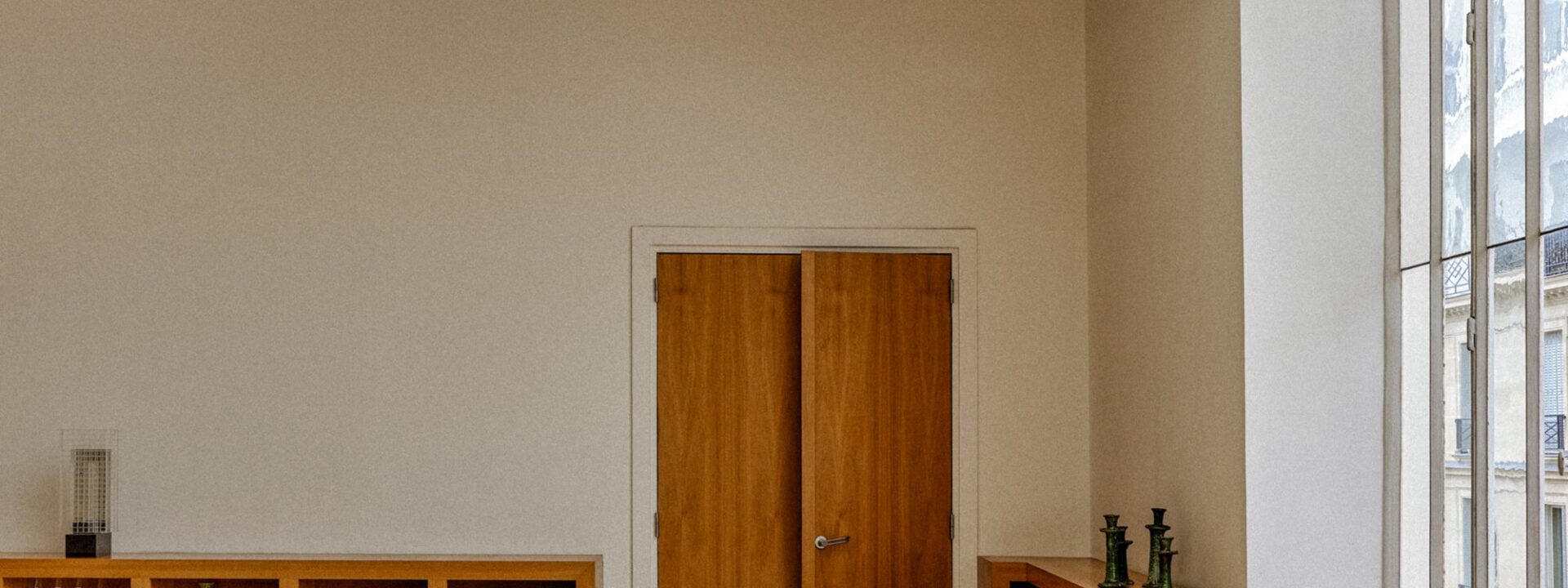If the word “pine” makes you shudder, you probably grew up with cheap orange-toned furniture in your ’90s bedroom. Once considered an interior design faux pas, pine—a softwood known for its brown knots, smooth surface, and straight grain—is now making a comeback.
From bold wall paneling to chunky tables and chairs, searches for this affordable wood have surged by over 5,000% globally in the past month. On the second-hand marketplace Vinterior, sales of pine furniture—including Swedish mid-century pieces and Victorian larder cupboards—have jumped 500%, with demand expected to stay strong through 2025. Instagram is buzzing with pine enthusiasts, with Rainer Daumiller’s knotty round table and chairs being a standout favorite. British designer Faye Toogood even used Finnish pine for her Peace Outdoor Lounge Chair, created in collaboration with Vaarnii.
“There’s been a clear return to beautifully traditional pine—the kind you’d find in Victorian homes,” says interior designer Hollie Bowden. “I especially love the work of Swedish architect Axel Einar Hjorth—his Utö Chair is a favorite.” A cult classic discontinued in 1938, the Utö Chair now sells for up to $6,400 due to its rustic yet refined design. Designers like Rose Uniacke and Pierre Yovanovitch own pieces, proving its enduring appeal.
Interior designer Beata Heuman credits Hjorth’s influence for the “pine-o-mania”: “To my Swedish parents’ shock, his early 20th-century furniture has made a huge comeback, fueling pine’s resurgence. Those chunky pine pieces aren’t conventionally ‘beautiful,’ but they’re undeniably cool—adding an offbeat tension to a space.” She notes that while pine is abundant in Sweden, making it feel less exotic there, the Utö Chair shines as a standalone statement: “Its naïve simplicity gives it an artful, tongue-in-cheek charm.”
For antiques dealer Chloe McDonald of Scene by Chloe, pine’s revival may stem from fatigue with mid-century teak. “People needed a fresh wood in their lives,” she says. “The 1970s saw sculptural pine furniture playing with shape and proportion. Swedish pine armchairs and dining sets are big sellers, along with floor lamps by designer Solbackens Svarver.”
Roman Alonso of Commune Design uses pine for paneling, millwork, and cabinetry. “We love its tone, grain, and even its knots,” he says. “It’s often dismissed as too rustic, but when detailed well, it can feel elevated—just look at Frances Elkins’ pine-paneled interiors.”
Sustainable and affordable, pine brings a natural warmth to any space—proving it’s more than just a nostalgic throwback.Pine grows quickly and is often sustainably sourced, says Sophie Rowell, founder of interior design studio Cote de Folk. She loves its practicality, character, and warmth, calling it “inviting.” Her preference? “The more knots, the better—they make each piece unique,” she explains. “As pine ages, it develops a beautiful patina that adds to its timeless charm.” Rowell has used pine for wide plank flooring, wall and ceiling cladding, and furniture in her projects—and she’s not done yet.
How to use pine in your home today? Here are six key tips:
1. Look to the past
Explore how pine was used historically for inspiration. Designers like Charlotte Perriand, Pierre Chapo, and Luis Barragán offer great ideas to research.
2. Experiment with finishes
Different types of pine (like sugar pine and white western) and treatments can create varied looks. “We love natural finishes with wax or oil, but we’ve also used high-gloss polyurethane for a sleek effect,” says designer Alonso. “At the Ace Hotel in Chicago, we stained construction-grade pine plywood with watered-down paint for a stunning wall treatment.”
3. Use it unexpectedly
Pine shines when used in unconventional ways. Designer Christian Bense found a faux bamboo wardrobe made of pine for his apartment, creating an eclectic touch. Similarly, Heuman paired a rustic pine kitchen island with a modern interior for contrast.
4. Try pine flooring
Warm and durable, pine flooring is more affordable than hardwoods like oak. Designer Bowden used locally sourced pine on Scotland’s Isle of Bute, blending tradition with contemporary style. Interiors influencer Lucy Williams has reclaimed pine floors, and Heuman’s Swedish home features a quirky 1960s pine staircase.
5. Go bold with thick cuts
“Furniture designer Gustaf Westman loves chunky pine pieces, a trend that’s huge on Instagram,” says McDonald. Rainer Daumiller’s iconic chairs and tables share this aesthetic—oversized proportions feel fresh and stylish.
6. Be careful with cladding
Pine cladding can look amazing—or dated. “Hire a professional to ensure it fits your space,” advises Alonso. “Done right, it’s beautiful; done wrong, it can feel like a 1970s rec room.”
A faux bamboo wardrobe made from pine, sourced by interior designer Christian Bense.
Photo: Courtesy of Christian Bense
